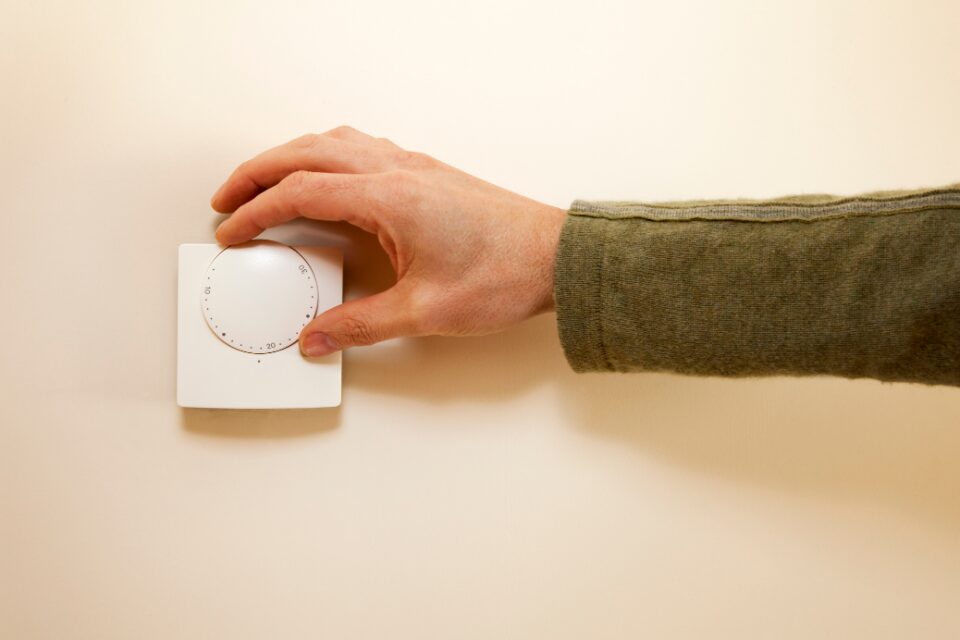We have all been there. You get home and the house is a bit cold. Someone (I’m not pointing any fingers) goes to the thermostat and winds it up to 30C.
A: “Why have you done that?”
B: “I’m cold.”
A: “Yes, but setting it to 21C, the temperature we are all happy with, is perfectly fine.”
B: “Yes, but I’m cold and setting it to 30C means it will heat the house up quicker.”
A: “I need a drink.”
Looking at the picture below, the one on the right is a throttle – if you press it down you move. The harder you push, the faster you go. If you want to go really fast push it to the floor – pedal to the metal. Everyone gets and understands this.

Room thermostats do not work like throttles. If it’s cold and you turn the thermostat up your boiler or heat pump starts up and it works at one speed. If you set the thermostat to 21, 25 or 30C it will warm up at exactly the same speed. So if you want your house to be at 21C, set it to 21C – it will get there just as quickly as if you set it to 30C.
The only difference is if you set it to 30C the rooms will eventually get roasting hot so you will have to turn the thermostat down again and, to add insult to injury, probably open a window to let some heat out because it’ll be too hot.
Now let’s really confuse things.
This is the thermostat in my car. Weirdly, it’s half thermostat, half throttle, because my car (and yours) has a fan heater – the fan speed can increase and decrease the amount of heat delivered to the car.

If the fan goes flat out, lots of heat is delivered and the car heats up really quickly. If the fan speed is low, less heat is delivered and it heats up slowly. In climate control systems the fan speed is linked to the difference between the actual temperature and the set temperature, so the bigger the gap the faster the fan speed, and the quicker the car heats up. So in my car, if I get in and set the stat to 30C it gets to temperature quicker.
Now you try explaining that it’s different in a house. Good luck.



We have a toaster in our house. It gets turned up to speed up the toast. We have a lot of burnt toast…
Indeed it is not.. it is a glorified on off switch forcing heat generators to over perform and consume excess energy as this has to be set for a rapid heat up.
much better to run everything long and low..after all maintaining the temperature in regularly used spaces will always allow higher efficiencies and minimise energy consumption rather than turning things on and off…
and no.. you should not mix an on -off thermostat with compensation sensors..
We do the opposite and set our room thermostat to a lower level when we come in if the heating has been off.
We find it helps overshooting the temperature and the house getting too hot for a time. We can always tweak the temperature up later if we find we really need it.
Lots of comments about THE room stat. If most rooms have a TRV set on three or below, that will slow down the overall flow rate through the boiler, which puts up the boiler flow temp, which switches off the boiler.
In most setups the pump goes off at exactly the same time, Would it be better to have a timed pump overrun, which helps to use the residual heat in the system, rather than the rooms just losing heat?